What Is Semantic Search?
Semantic search refers to the process of how search engines understand and match keywords to a searcher’s intent in organic search results.
Before semantic search, search engines like Google operated like matchmakers—aligning specific words in your query with those exact words on webpages. The results were straightforward but often lacked depth.
Semantic search brought a fundamental shift in how search engines process and respond to user queries. They now understand natural human language. Which allows them to deliver more meaningful results.
Suppose you search for “pizza near me” at 11 p.m. Instead of showing you a list of all pizza places, the search engine will prioritize those that are open late or offer night delivery. It understands the time-sensitive nature of your query.
Semantic search differs from an exact-match search, also known as lexical search. The latter only looks for accurate database matches while ignoring spelling or grammar variations.
Here’s a lexical search vs. semantic search comparison:

Image Source: Medium
Semantic search goes beyond surface-level keyword matching. It uses advanced algorithms to understand and respond to the users’ nuanced needs—leading to more relevant and intuitive search experiences.
Now that we’ve defined semantic search, let’s discuss how it works, its impact on SEO, the evolution of Google’s algorithm, and how to optimize your content effectively.
The Technology Behind Semantic Search
Sophisticated algorithms support semantic search. They analyze the query’s context, user or search intent, and the relationship between words to provide more accurate and relevant search results.
Further reading: What Is Search Intent? A Complete Guide
The evolution of Google’s algorithm over the years now allows the search engine to understand semantics better.
From the Knowledge Graph to RankBrain: Key Technological Advances
Knowledge Graph (2012)
The Google Knowledge Graph is a vast database with a network of over 500 billion facts about 5 billion entities (people, places, and things) and how they’re connected.
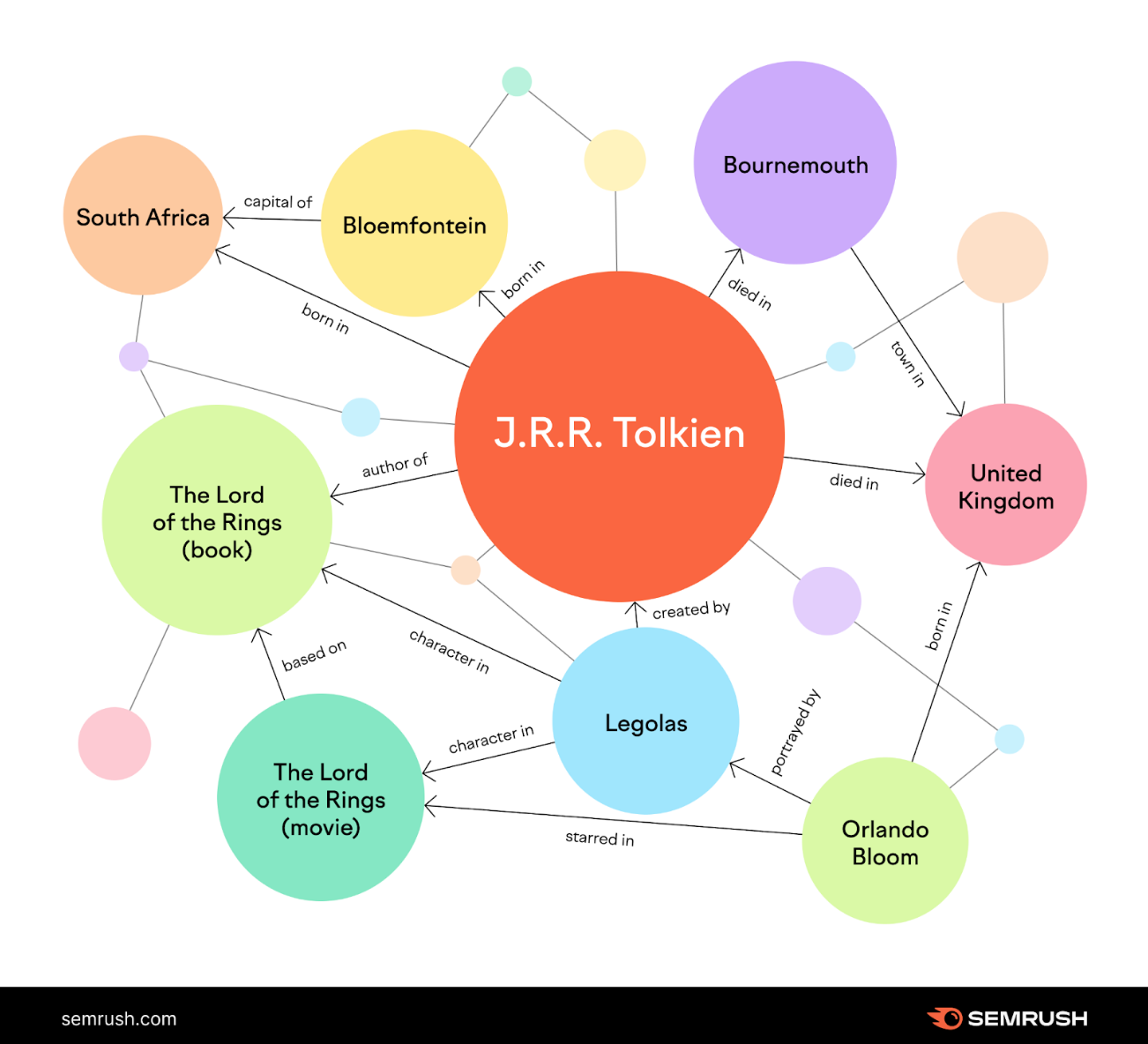
The Knowledge Graph is the backbone of how Google has evolved to understand the world. It enables Google to offer quick, accurate answers to search queries about real-world subjects.
When you type a query word into Google, you’re not just entering a sequence of words. You tap into a complex web of meanings and connections. Google’s Knowledge Graph sees these words as entities with context and relationships.
One of the features that applies to the Knowledge Graph is the panel on the search engine results pages (SERPs) next to the results.
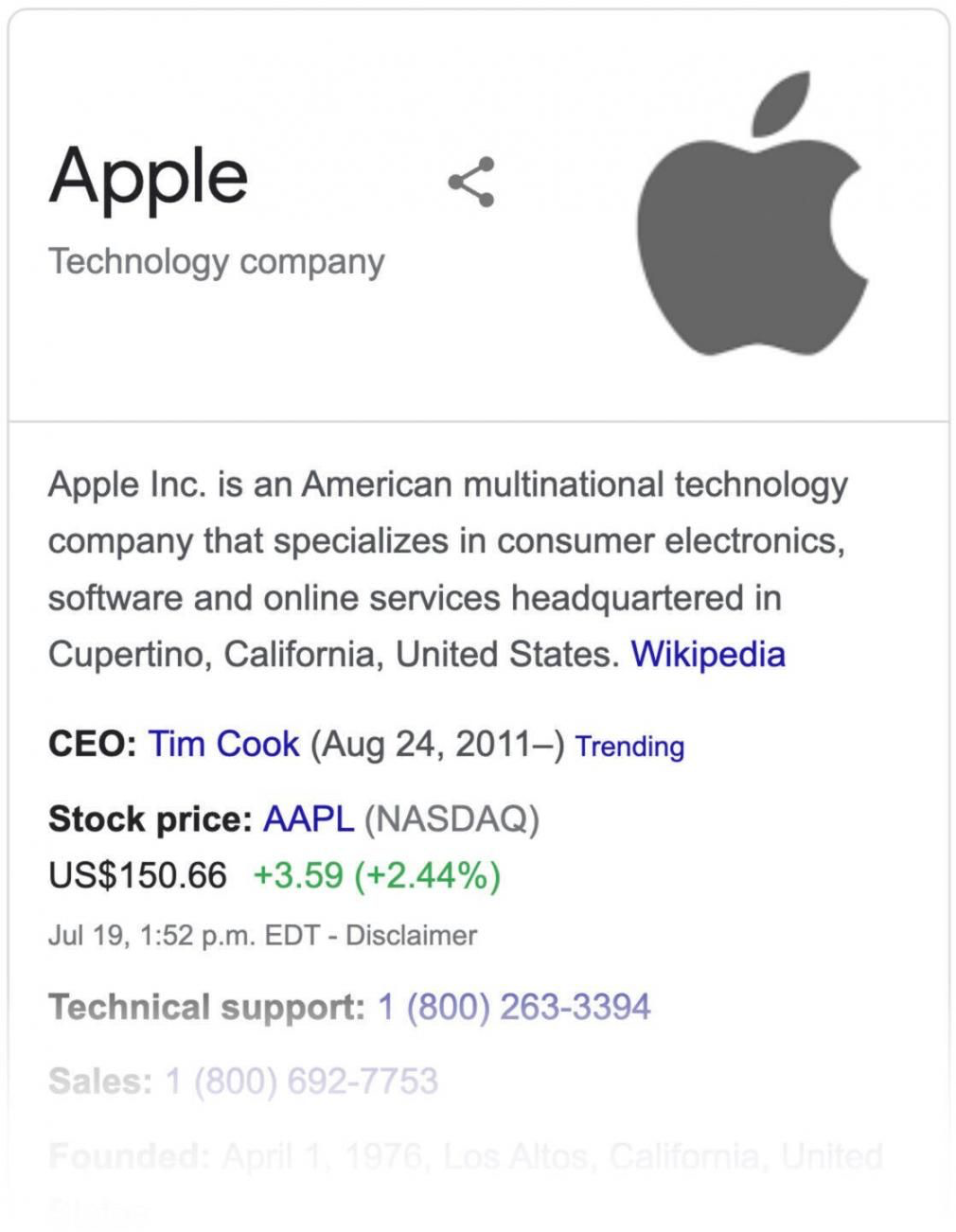
When you search for “Apple,” Google doesn’t just see a word that describes a fruit. It recognizes Apple as a company and can provide related information. Like the name of its CEO, Tim Cook, or its latest stock prices.
Hummingbird (2013)
Google announced the Hummingbird update in 2013. It was Google’s answer to the rise of voice searches, where queries became more conversational and nuanced.
This update prioritized natural language processing (NLP), which helps the system understand and interpret human language as it is spoken or written.
By integrating NLP, Hummingbird allowed Google to move beyond mere keyword matching. It helped the search engine comprehend search intent, increasing the odds that results would accurately match the reason behind a user’s search.
RankBrain (2015)
As the third most important ranking factor after content and links, RankBrain has improved Google’s semantic search capabilities to understand the meaning of search queries. Especially unique and complex ones.
RankBrain is a machine learning system that helps Google interpret queries it hasn’t seen before.
It can make guesses about words and phrases it doesn’t recognize and filter results accordingly. Making it more effective at handling never-before-seen search queries.
RankBrain considers more than just keywords when analyzing a search query. It looks at the user’s search history, trends, search intent, user location, and more.
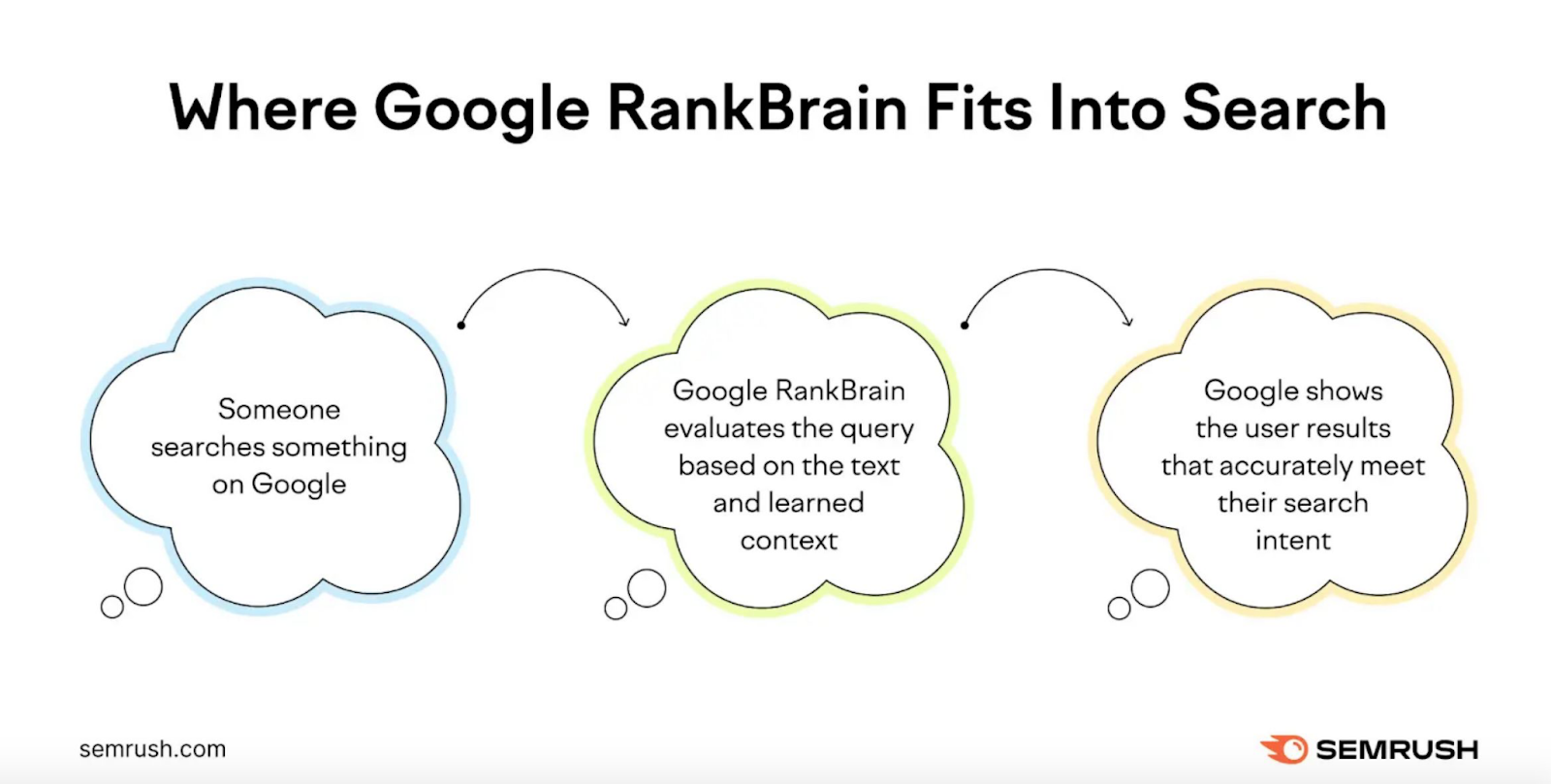
Let’s say you search “how to make pasta without wheat flour” on Google.
With RankBrain, Google understands the importance of “without” in this context. It interprets the query more accurately and recognizes that you’re looking for pasta recipes that do not include wheat flour.

The search engine provides results featuring recipes using alternative flour and gluten-free options.
Continuously learning and adapting, RankBrain ensures that the search engine becomes more intelligent and user-focused over time.
How Does Semantic Search Work?
Semantic search focuses on understanding the search intent, context, and underlying meaning of the words we use to search for information online.
Search intent is the reason behind a user’s search query. Is the user researching general information, comparing products or services, or ready to purchase? Google tailors its search results to match these different intentions.
So how does Google do this?
By using semantic analysis—the backbone of semantic search.
Semantic analysis involves examining and interpreting the search query to understand the user’s intent and contextual meaning of the terms used.
Algorithms implement semantic search by analyzing the relationships between words, their definitions, and how people use them in everyday language.

Using Natural Language Processing (NLP)
In semantic search, NLP decodes human language nuances, allowing search engines to process and understand user queries as a human would.
Consider the semantic search query “tips for training a puppy.”
In a traditional keyword-based search, a search engine might focus on matching the exact words “tips,” “training,” and “puppy.”
With semantic search, Google understands that the user is likely seeking advice on dog training, particularly for a young dog. So it fetches results that match the keywords and align with the overall intent of providing puppy training advice.
And if the user frequently searches for dog-related content, Google might prioritize more detailed training guides—recognizing the user’s ongoing interest in the subject.

Combining Technologies for Enhanced Understanding
Combining technologies like the Knowledge Graph, Hummingbird, and RankBrain, semantic search helps the Google algorithm interpret and link data across a vast web of information.
This integration allows Google to understand the context and meaning behind user queries—rather than just the specific words used—to deliver better search results.
Evolving Through Machine Learning
Machine learning continuously improves semantic search by comprehending complex patterns and analyzing historical queries. This ongoing learning process involves adapting to user behavior, understanding nuanced language shifts, and refining result predictions.
By learning from patterns in data and previous queries, search engines become increasingly adept at predicting the most satisfying content for any given query.
How Does Semantic Search Impact SEO?
Semantic search significantly impacts SEO. The focus shifts from keyword selection to a holistic approach encompassing user intent, topical relevance, and overall user experience.
Creating content that addresses the searcher’s needs with comprehensive information can improve your SERP rankings.
Below, we outline the trends and practices that consolidate the need for semantically informed content. Later, we provide actionable tips to turn these insights into best practices.
Users Are Increasingly Turning to Voice Search
Voice search is becoming more prevalent: 62% of U.S. adults use voice assistants and 35% own a smart speaker.
This data highlights the growing importance of optimizing content for voice search—where natural language and conversational queries are dominant.
Some examples of optimizing your content for voice search include:
- Using a natural and conversational tone
- Listing your business on platforms like Google Business Profile to optimize for local search
- Creating frequently asked questions (FAQs) pages that answer common questions with straightforward answers
Search Intent Has Become a Priority
Understanding why a searcher types a query is central to semantic search, where search engines strive to provide results that meet a user’s underlying intent.
There are four types of search intent:
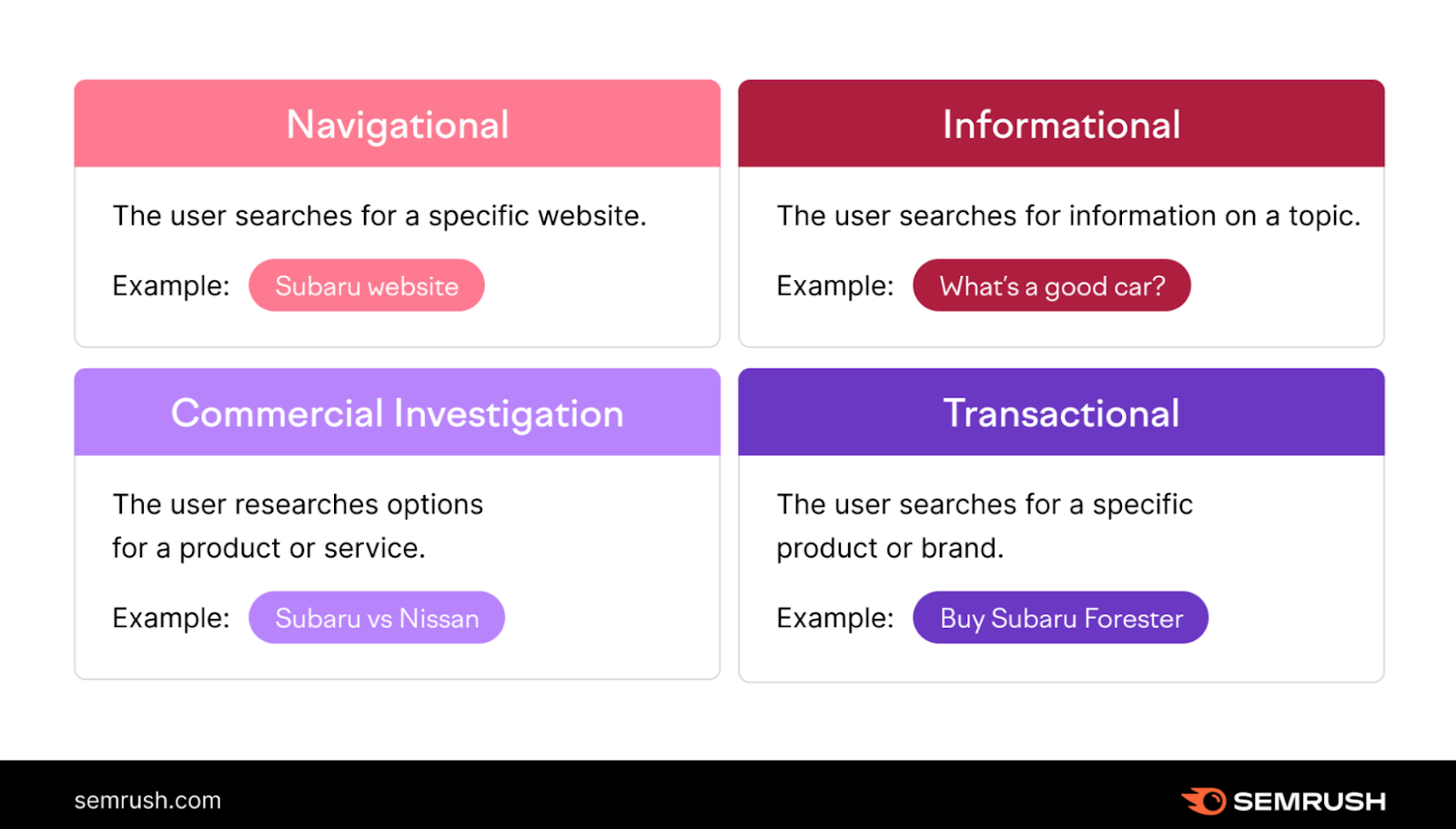
Having a solid understanding of the four intent types during keyword research helps you discern why users might be searching for those terms. And what kind of content can best satisfy their needs.
Focus Has Shifted from Keywords to Topics
A broader approach to content aligns better with semantic search’s shift away from exact keyword matching and toward user intent.
Which explains the increased focus on topic clusters, rather than individual keywords.
Content that covers search queries more thoroughly not only satisfies users. It can boost organic rankings across topical searches as a result.
Essentially, you create groups of webpages that comprehensively cover related keywords within a cluster. Your central pillar page broadly covers a given topic. Which then links to related cluster pages that delve into individual sub-topics in more detail.
Like this:
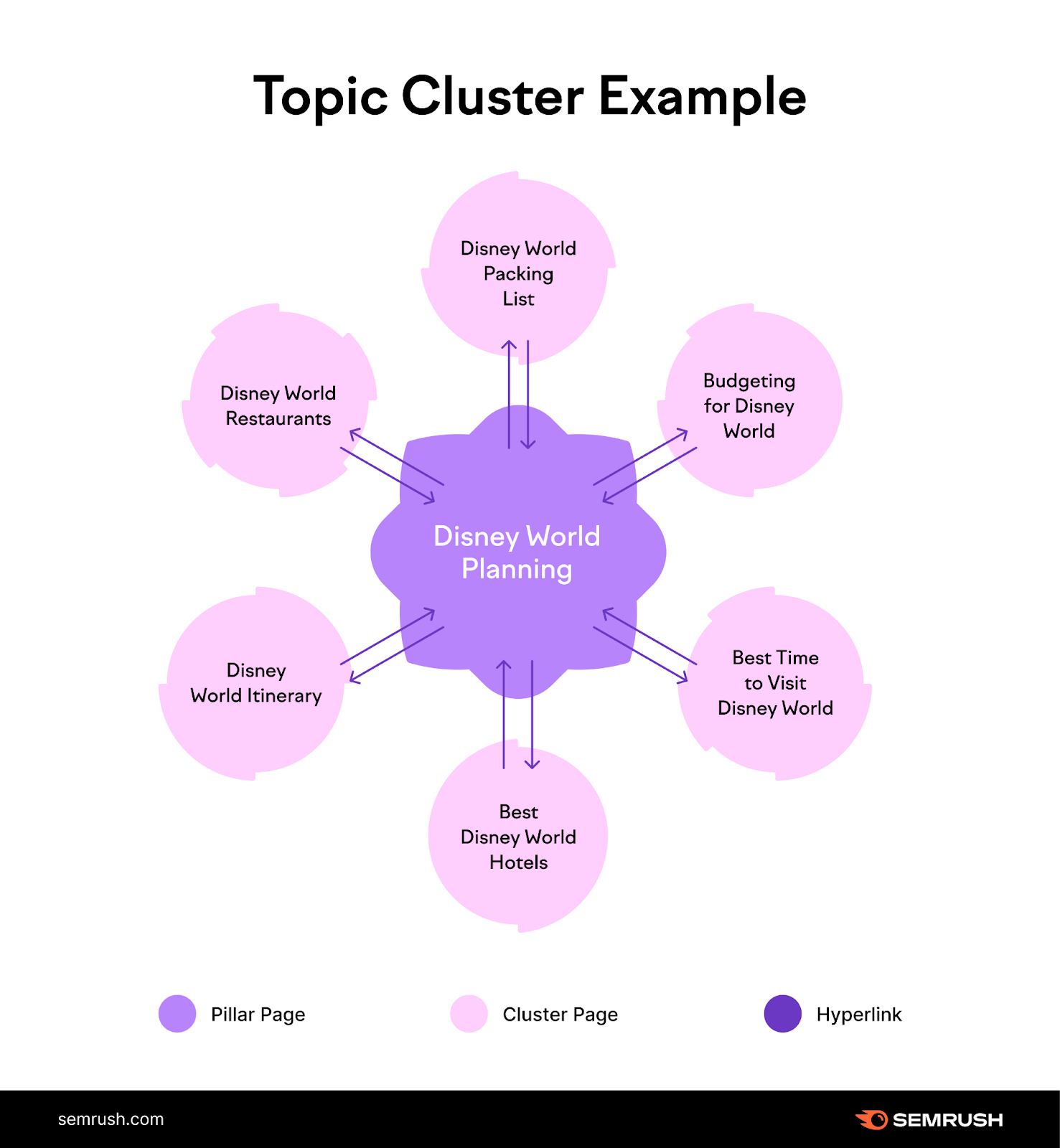
A topic cluster strategy helps you build expertise on a specific subject. And increases your chances of ranking higher on SERPs for related keywords as you establish topical authority.
Technical SEO and UX Matter Just as Much as Content
Technical SEO is vital for semantic search as search engines need to be able to crawl and index the content efficiently. This ultimately makes your website easily accessible by both users and search engines.
Factors like site speed, mobile responsiveness, and structured data can help decrease visitor bounce rates, increase customer conversions, and improve search rankings.
For instance, conversion rates are three times higher for ecommerce sites that load in one second than for those that load in five. And five times higher than sites that take 10 seconds to load.

While technical SEO ensures optimal website performance and accessibility, focusing on user experience (UX) takes it a step further. UX aims to create a visually appealing, user-friendly interface with engaging, quality content that encourages visitors to stay.
Semantic search technology enables search engines to aim for results that provide the best possible UX. Primarily through content that is easy to read, skimmable, and contains actionable information.
A unified UX and SEO strategy better aligns your content with semantic search to connect you more closely with your target audience.
Examples of Semantic Search
Here are some specific cases of queries that demonstrate how semantic search works.
Informational Queries
When you search for “tim cook,” Google taps into its comprehensive knowledge graph to provide a detailed and structured overview.

The above SERP includes general information, images, historical details, and the latest news about Apple’s CEO.
Google tailors its organic search responses because it recognizes your intent to learn more about Tim Cook. Offering you a holistic understanding, rather than just webpages containing keywords.
Product Queries
A search for “spaghetti” yields more than just general information in the results. Google considers that you might want to make spaghetti, so it shows you recipes, too.

However, recognizing the ambiguity in the term “spaghetti” (which could refer to nutritional facts or restaurants that serve spaghetti), Google provides a broader range of information than just recipes. Which shows the search engine’s capacity to interpret meaning and cater to varied user intents.
Website-Specific Queries
A search for “X” predominantly shows results for logging in or signing up for X (formerly Twitter).

The SERP indicates that Google likely understands that the primary intent behind this query is to access the website.
Still, if you scroll down, you can find additional results—like People Also Ask (PAA) answers on whether it’s X or Twitter. All showcase Google’s ability to address a topic query comprehensively.
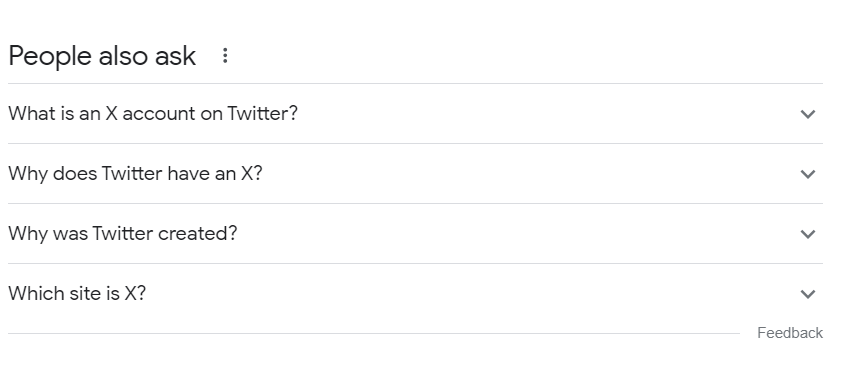
Benefits of Semantic Search for Users
Enhanced User Experience and Engagement
By understanding the context and intent behind user queries, search engines can deliver more relevant information and potentially increase user engagement.
Personalization in search results makes for better UX.
Based on your past search history and preferences as a user, semantic search helps search engines tailor the results to suit your unique needs and interests.
Let’s take a user who frequently reads about space exploration as an example. They perform an online search on “Saturn.”
Instead of receiving generic information about the car or the planet, they might see results focused on recent space missions or astronomical discoveries related to Saturn. Reflecting their specific interest in space science.
Improved Content Relevance and Quality
Semantic search promotes higher-quality content by rewarding comprehensive, contextually relevant information over keyword-stuffed pages.
This shift impacts content creation and marketing. Encouraging creators to develop more user-focused and informative content.
Consider a health blog. Instead of only targeting specific health-related keywords, it could cover topics addressing questions users might have about health and wellness to align more closely with their search intent.
How to Optimize Your Content for Semantic Search
Optimize for Voice Search
Implement voice search optimization to enhance your content for semantic search, as both prioritize user intent and context.
You’ll increase the chances of voice assistants like Google Assistant, Apple’s Siri, Microsoft’s Cortana, and Amazon’s Alexa selecting your content or reading it aloud in response to conversational searches. Helping you rank in voice search queries.
Voice queries are often longer, more descriptive, and framed as complete sentences or questions. So, your content needs to be more natural and conversational.
To align with voice search’s conversational nature, try to focus on these types of keywords:
- Long-tail keywords: Specific and less common search queries. Example: “best methods for indoor herb gardening.”
- Question keywords: Keywords starting with question words such as “how,” “what,” or “why.” Like “how to start a herb garden indoors.”
- Conversational keywords: Keywords imitating natural speech, often used in voice searches. For instance, “What’s a good method for growing herbs inside?”
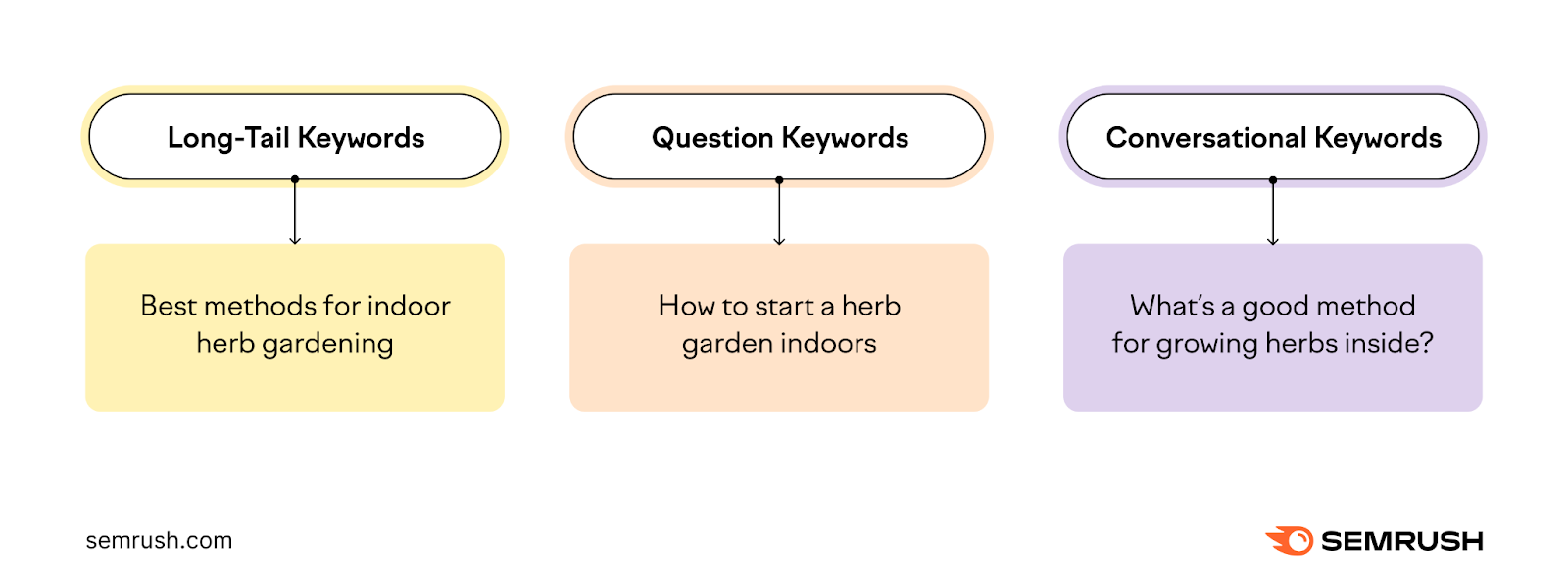
These keyword categories, though unique, frequently overlap and share traits. Question keywords can be conversational keywords, and many long-tail keywords also involve asking a question.
Use the Keyword Magic Tool to research long-tail keywords that users will likely search for via voice assistants.
On the left-hand sidebar, click on “Keyword Magic Tool” under “SEO” > “KEYWORD RESEARCH.”
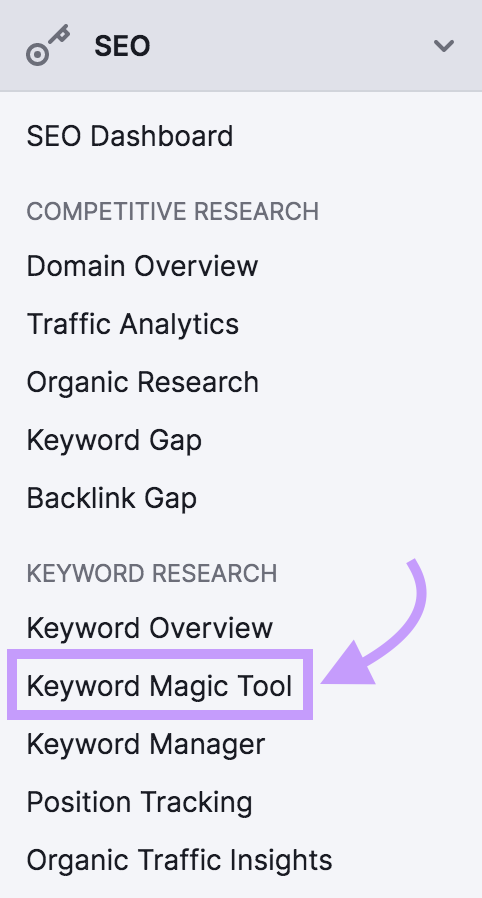
Enter a seed keyword (a broad search term related to a specific topic) in the search box, select your location, and hit the “Search” button. In this case, we’ll use “herb gardening.”

The tool will deliver a list of keywords related to your broad search term and data points like “Intent,” “Volume,” and “Keyword Density.”
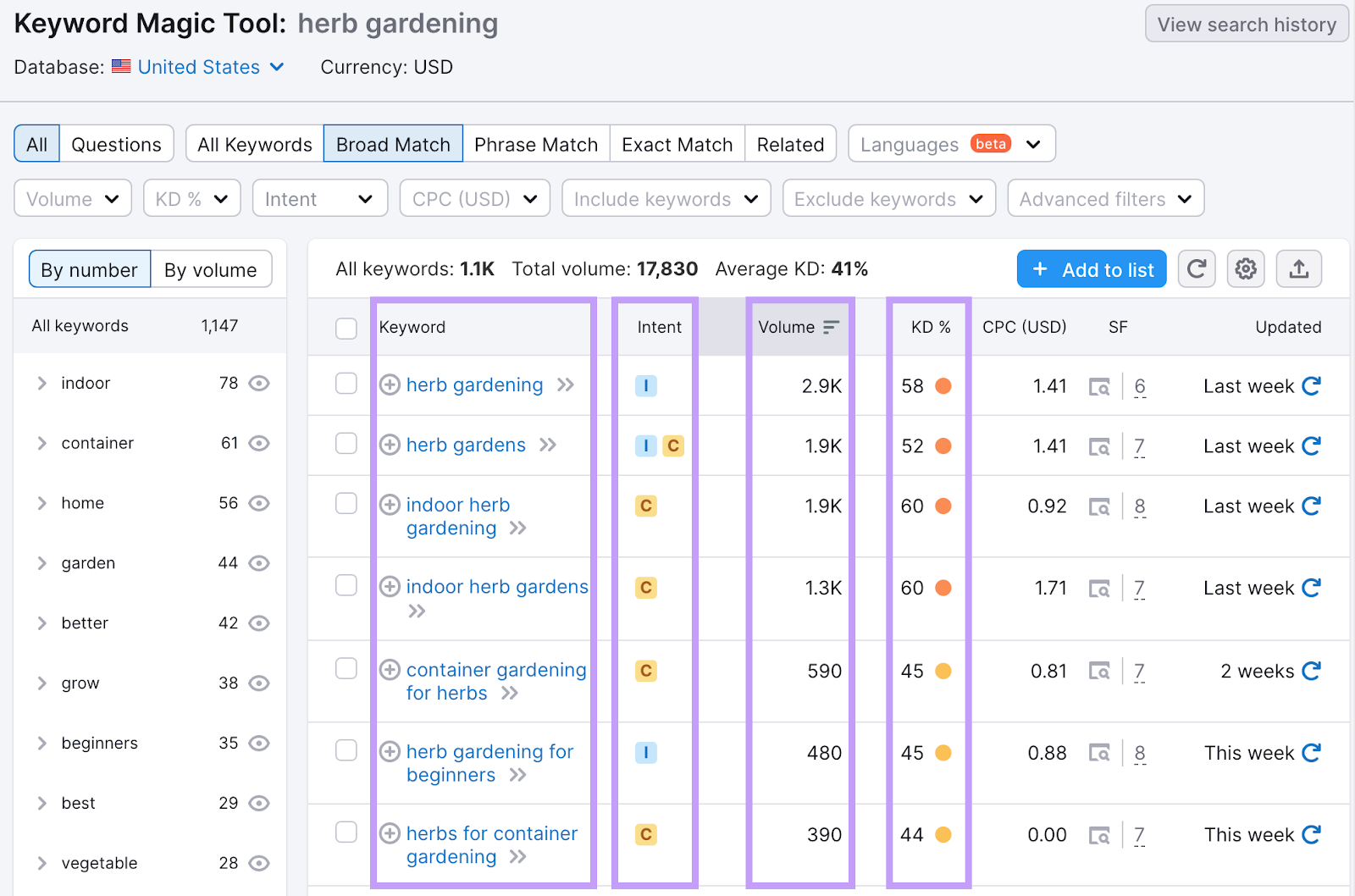
Apply the keyword difficulty filter to assess how hard it would be for your website to rank organically in Google’s top 10 search results for a specific keyword.
Click on the “KD %” drop-down filter box, and pick “Very easy” or “Easy” to view the least difficult options.
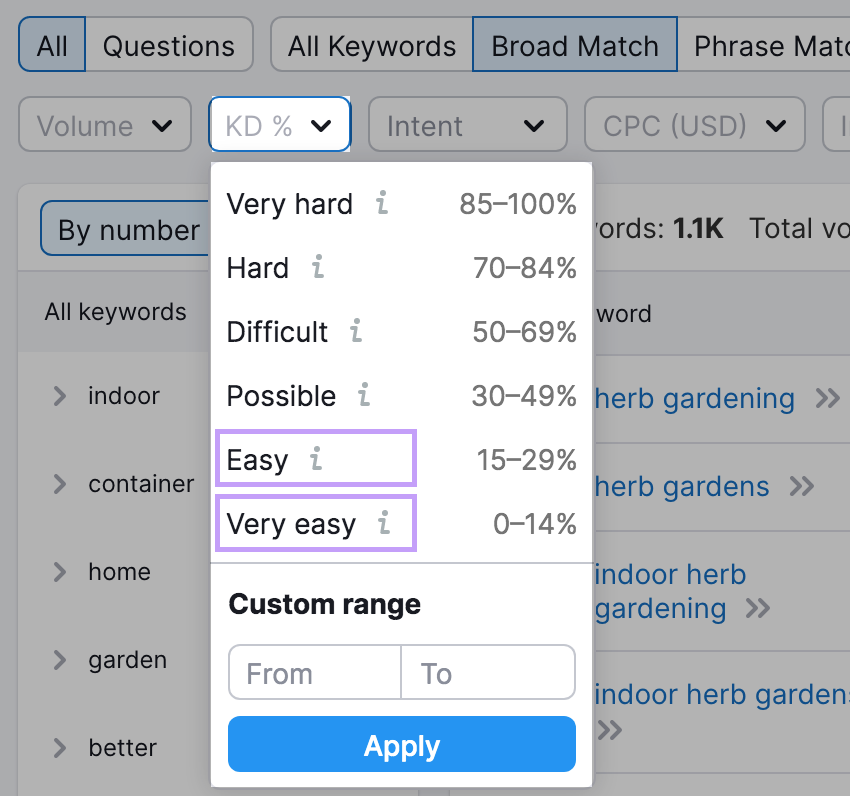
You can also set the maximum KD% to “29” in “Custom range” to get keywords with “Easy” and lower difficulty.
Here are the “Easy” long-tail options for our seed keyword:
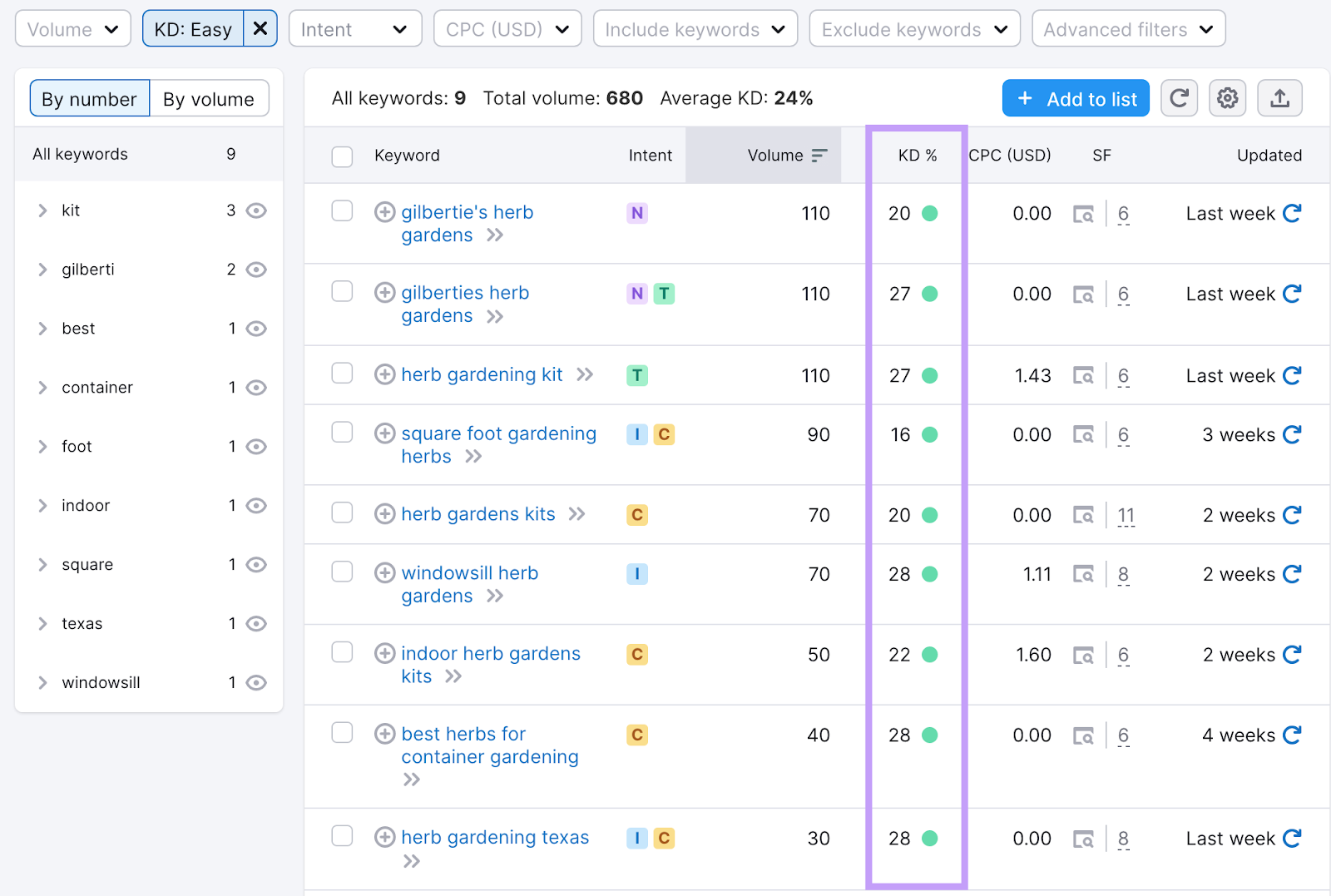
Next, click on the “Questions” filter to view only question-based keywords that will help you target voice search.
In our case, we noted there were no easy-to-target questions. So we opted for the next easiest KD level of “Possible.”

You can group the most relevant keywords into a focused keyword list. Simply check the box next to the keywords you want to add. Then, click “+ Add to list.”
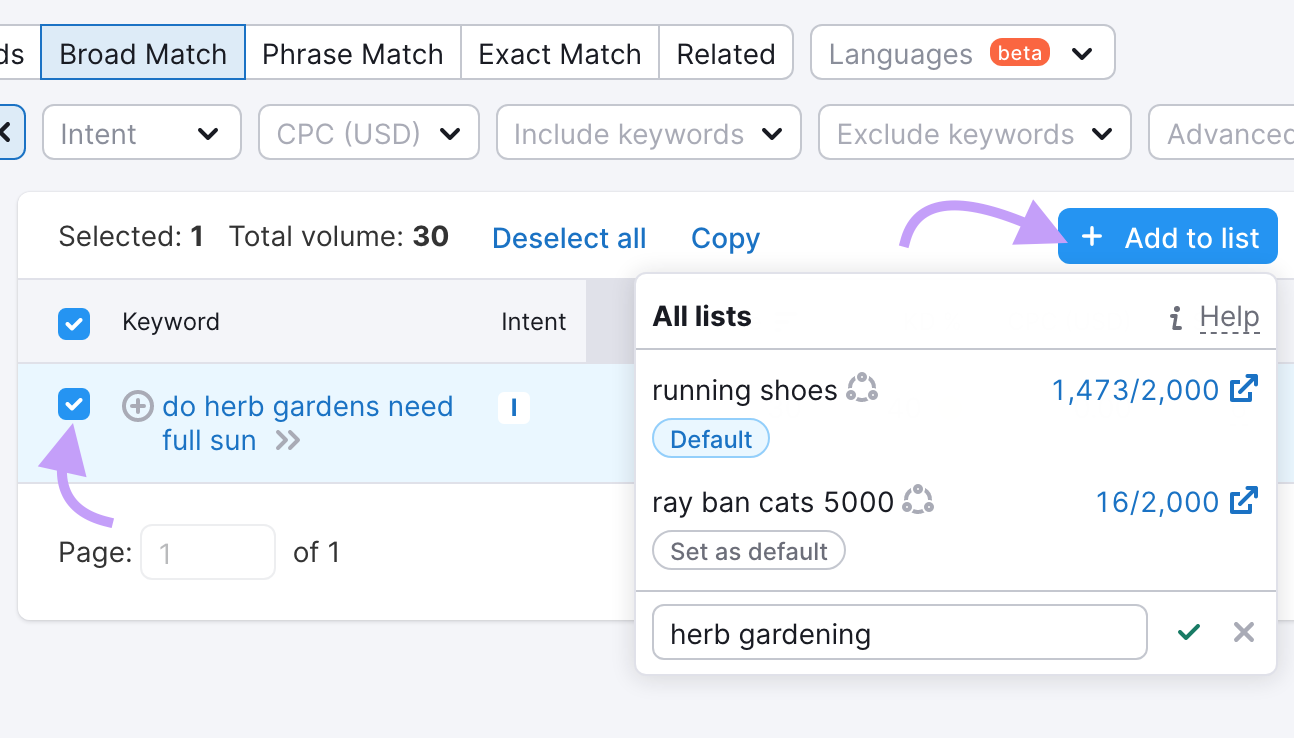
Finally, select an existing list or create a new one.
Target these keywords as part of your content strategy to increase your chances of appearing in voice search results.
Prioritize Search Intent
Bridge the gap that search engines aim to close between users’ search queries and what they actually mean.
How?
Write with search intent in mind. This practice is key to optimizing for semantic search, as it aligns your content with a variety of possible intentions behind user queries.
Go beyond matching what users seek at face value and anticipate their follow-up questions.
Say you’re running a website focused on healthy eating. A user might search for “healthy breakfast ideas.”
As well as providing a variety of healthy breakfast recipes, address further queries or pain points searchers may have.
Include nutritional information for the recipes. Explain how these breakfast options can fit into different diets (like vegan or gluten-free). Add tips for quick meal prep. And suggest ingredients that can boost energy levels for a busy day ahead.
Explore search intent with the Keyword Magic Tool.
The “Intent” column on the related keywords results page indicates search intent per keyword. Further filter this by intent type.

The Keyword Overview tool can also find the intent behind a particular search term and perform SERP analysis.
Enter up to 100 target keywords in the search box, select your location, and click the “Search” button.
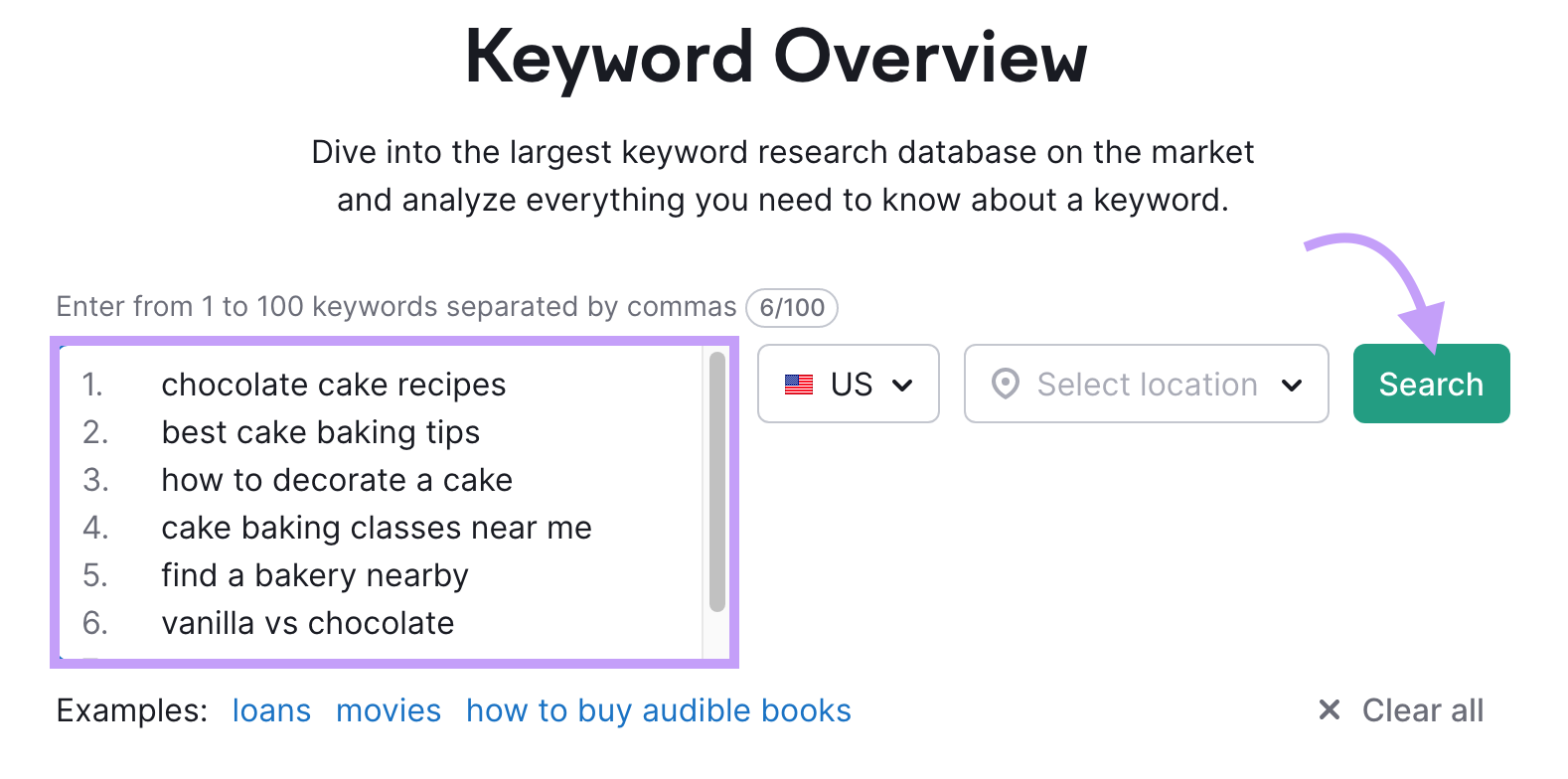
If you enter two or more keywords, the tool will perform a bulk analysis showing intent per keyword. Showing the results in a list like this:
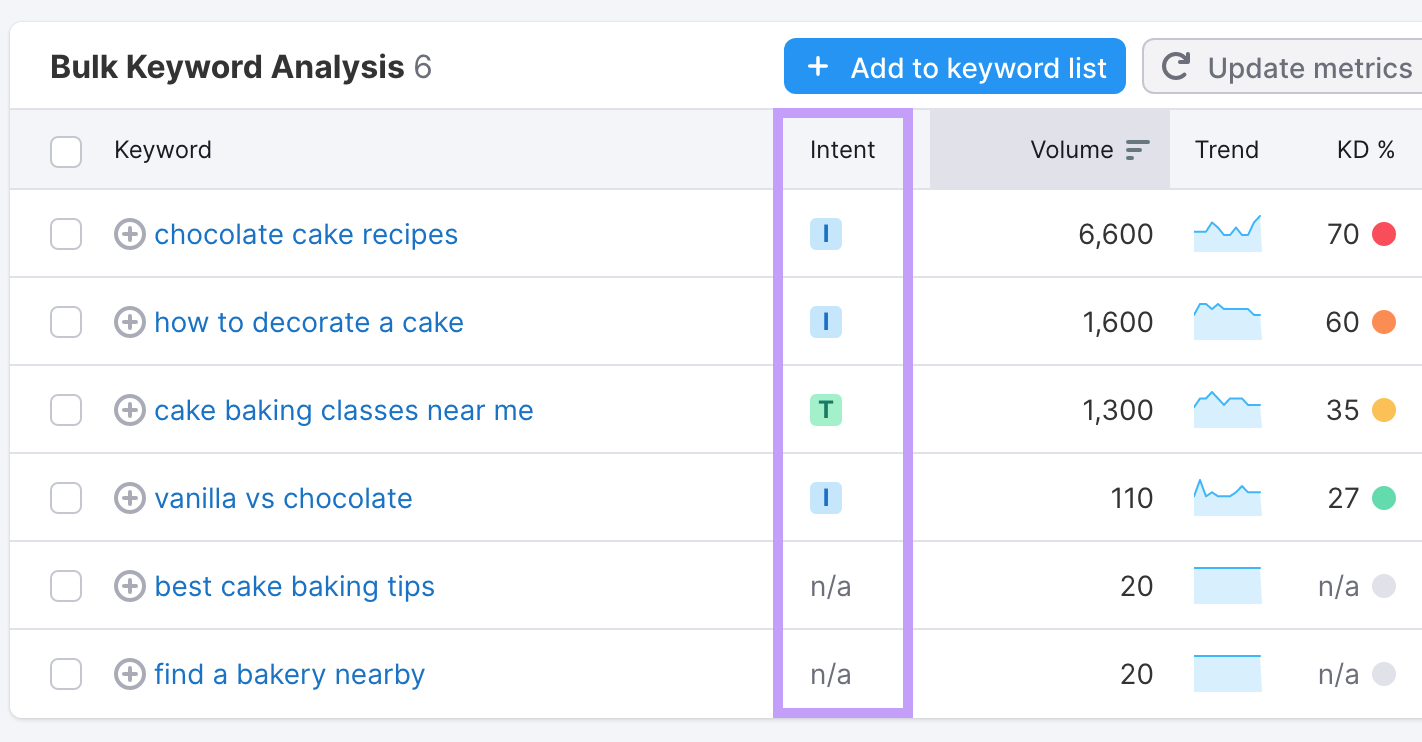
To analyze more keywords, add them in the input box above the list and click “Analyze.”
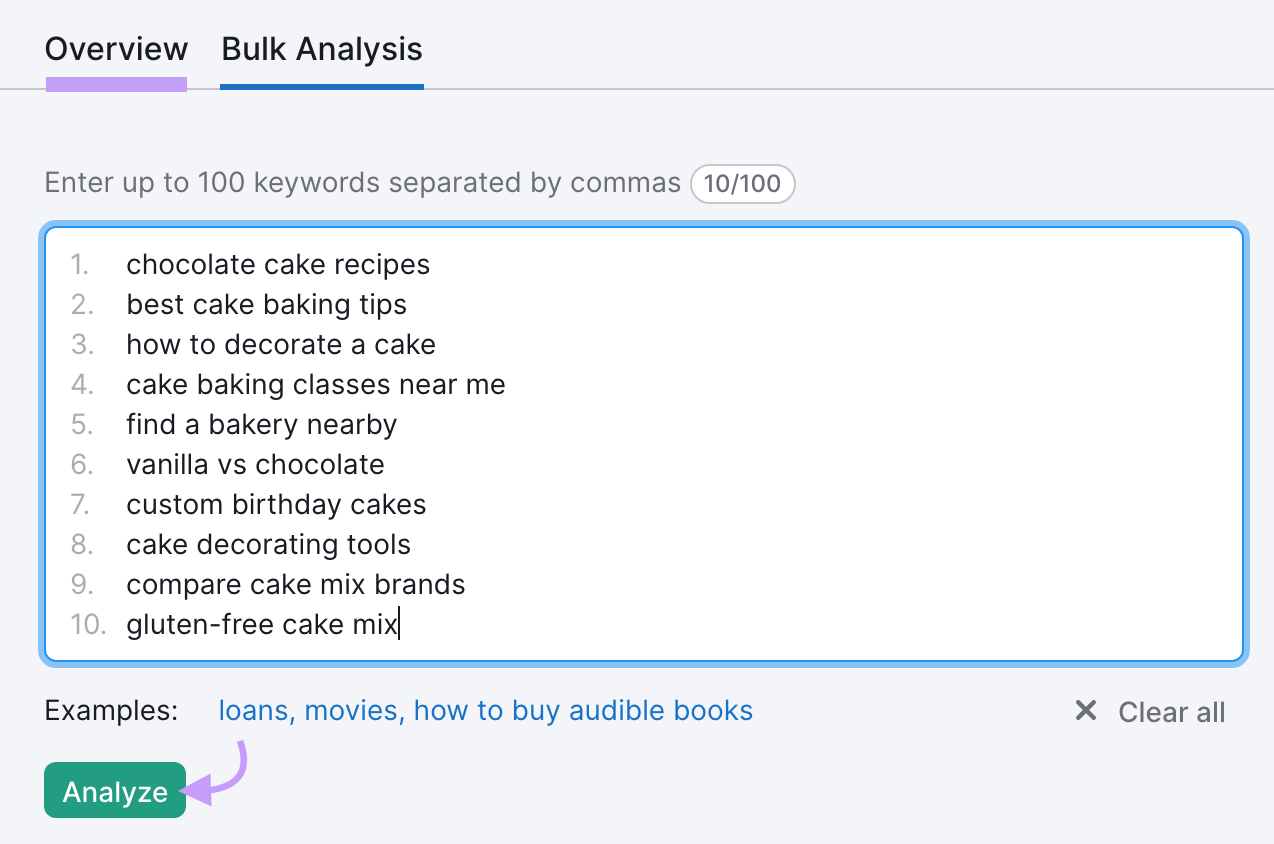
Click individual keywords from the list to get more details. The keyword-specific data will look like this:

Scroll down to the “SERP Analysis” section to view the pages that rank for the keyword.
You can click “View SERP” in the top right corner of the “SERP analysis” box to get a better view of the SERP for the keyword.

Analyze these results to determine the keyword’s intent and tailor your content to match it.
You can ask these questions to study the SERP listings better and draw inspiration for your content:
- What makes the highest page results unique?
- What angle did these pages take to address the target keyword?
- How much information about the keyword topic do they cover?
- What can you add to create even better content and outrank them?
Focus on Topics, but Don’t Forget Keywords
Go beyond surface-level knowledge to explore a topic and its broader context. Address various related questions and offer extensive information, aligning with semantic search’s focus on topical relevance and breadth.
You can develop content that covers a broad topic thoroughly by creating topic clusters and building pillar pages.
Say you have a website about healthy eating. Your pillar page might be a comprehensive guide on healthy eating principles. Covering core aspects like nutrients, diet plans, and common misconceptions.
Then, add internal links from your pillar page to your cluster pages as you build them out. Sub-topics may include “Benefits of a Plant-Based Diet,” “Understanding Food Labels,” or “Meal Planning for Weight Loss.” Link each cluster page back to the pillar.
Don’t forget the importance of keywords, though. Use semantic keywords—words or phrases conceptually related to a topic—to provide a broader understanding of the subject in question.
Quickly find semantic keywords using Semrush’s SEO Content Template.
This tool analyzes top-ranking competitors’ content for your target keyword(s). And then generates a list of relevant semantic keywords found on their pages—which you can incorporate into your content to optimize for semantic search.
Select “SEO Content Template” from the left sidebar under “Content Marketing.”
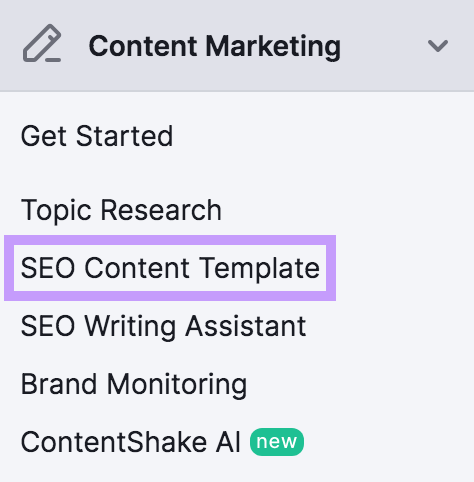
You can also find “SEO Content Template” under “SEO” > “On Page & Tech SEO” in the navigation bar.
Input your target keywords and select your preferred location, language, and device. Then, click the “Create content template” button.
Let’s target the keywords: “healthy eating,” “diet plans,” “exercise routines,” and “weight loss tips.”

You’ll find the suggested semantic keywords in the “Semantically related keywords” field of the “Key recommendations (based on your Google top 10 rivals)” section.

Observe how these keywords form broader topics and user intent angles.
Next, cover topics your competitors discuss to satisfy user needs—and show search engines that your content has deep topical relevance.
Leverage the SEO Writing Assistant to review your written content in real time and ensure you don’t miss any semantic keywords.
Improve Technical SEO and User Experience
Balance technical SEO with excellent UX to give both users and search engine crawlers a seamless navigational experience.
Follow these best practices to help you achieve a fully optimized website structure:
- Implement schema markup (structured data)
- Optimize page load speed
- Implement semantic HTML
- Build your site architecture and navigation
- Create relevant internal links and backlinks
The Future of Search Engines
With AI becoming central to improving online search capabilities and UX, the future of search engines is increasingly tied to semantic search.
Role of AI in Search
Although Google Search has used AI for years—since the announcement of RankBrain in 2015, Bing is more recently employing AI to do more than evaluate content.
Here are some ways we’re seeing search engines use AI:
- AI-powered search results: Bing uses the ChatGPT-4 model to generate answers as responses to user search queries. Google’s experimental Search Generative Experience (SGE) uses generative AI to provide snapshots of information that quickly answer their queries.
- AI-generated content: Bing lets users craft text drafts easily with its AI text generator feature, Bing Compose.
- Conversational AI in search: Google Bard is transforming search by focusing on natural language understanding and response. It draws on web information to provide rich, high-quality answers—facilitating a more dynamic, interactive search experience.
Further reading: Learn more about how search engines use AI in our Google vs. Bing comparison post.
Evolution of Search Engine Ranking Factors
Search engine ranking factors increasingly lean toward valuing authoritative, reliable content that addresses users’ queries.
A Statista survey involving over 3,500 SEO experts revealed that the key emergent factors influencing global search rankings are:
- Machine learning/AI
- Core Web Vitals
- E-E-A-T (Expertise, Experience, Authoritativeness, and Trustworthiness)
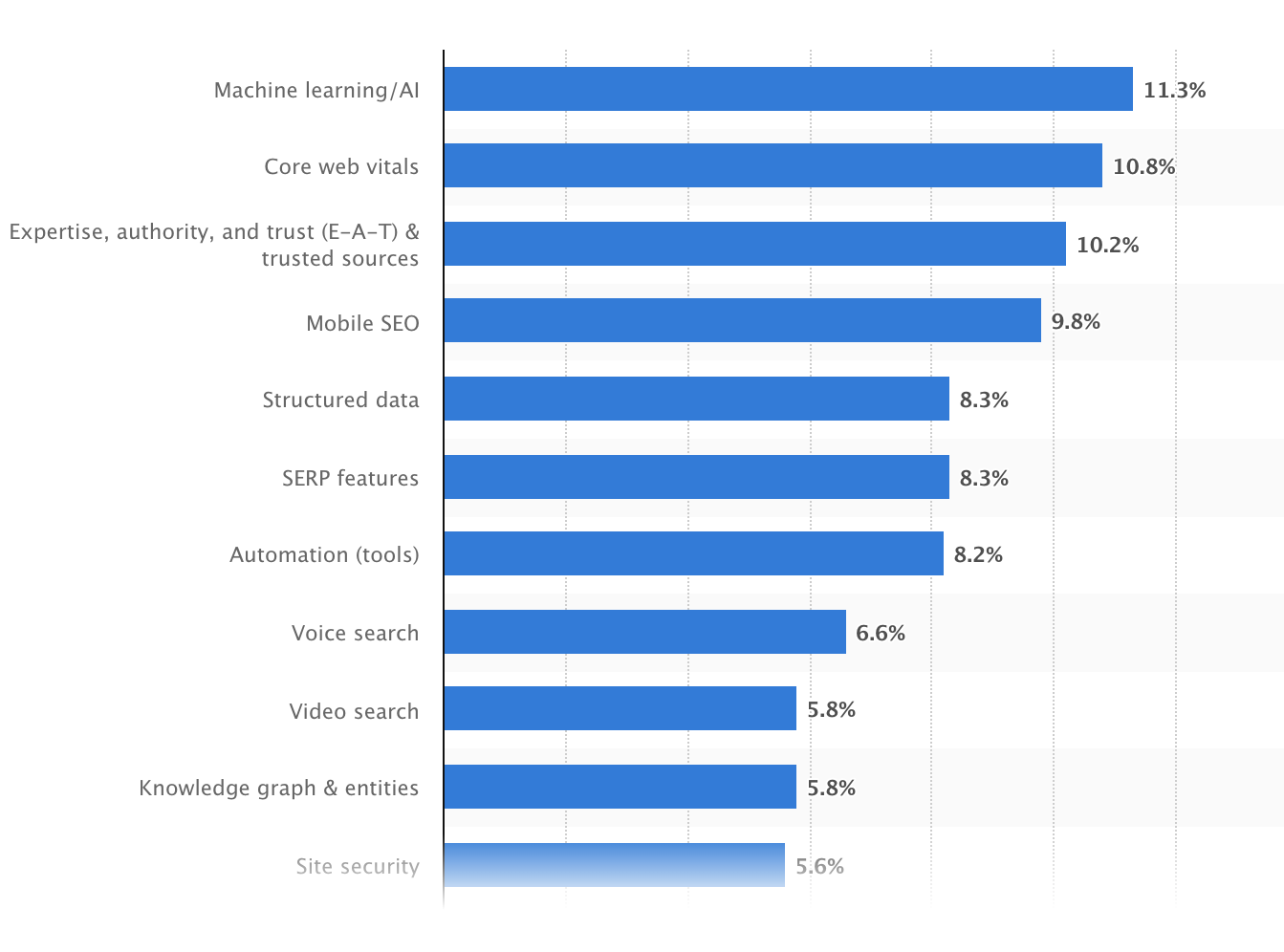
This trend ensures that search results accurately respond to queries and offer helpful, people-first content from credible sources.
Optimize for Semantic Search with Semrush
As search engines evolve, understanding and adapting to semantic search becomes crucial for digital marketing success.
The key takeaway is the growing importance of aligning your content with search intent, capitalizing on AI and machine learning, and focusing on authoritative, context-rich content for human users.
We’ve already outlined how the Semrush suite includes SEO tools designed to help you optimize for semantic search.
Sign up for a free trial to reach your target audience more effectively.
This post was updated in 2024. Excerpts from the original article by Kelly Lyons may remain.
